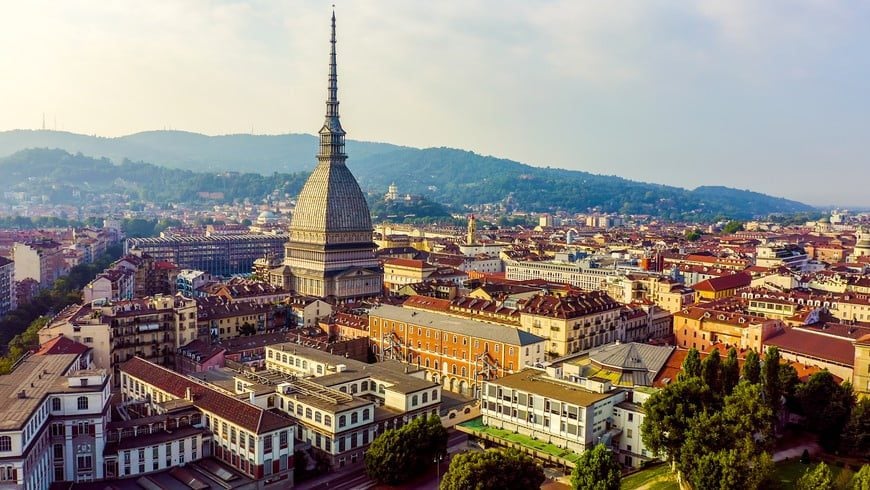What to see in Turin in one day on your own is a far from trivial question. This city is ideal for tourists. It has everything: the great Alps, visible from any point, architectural and cultural monuments, well-maintained streets, and squares. Some guides joke that to become completely perfect, Turin needs to add the sea to its existing beauties.
But it does have a sea! True, a prehistoric one. Fossilized marine organisms and shells are found on Monte dei Cappuccini. Tourists are often pressed for time: they want to see everything, but there’s never enough time. However, if you plan your route wisely, you can see the main interesting sites in one day. And if something remains unseen, well! — you’ll have to return to this charming city again!
Palatine Towers
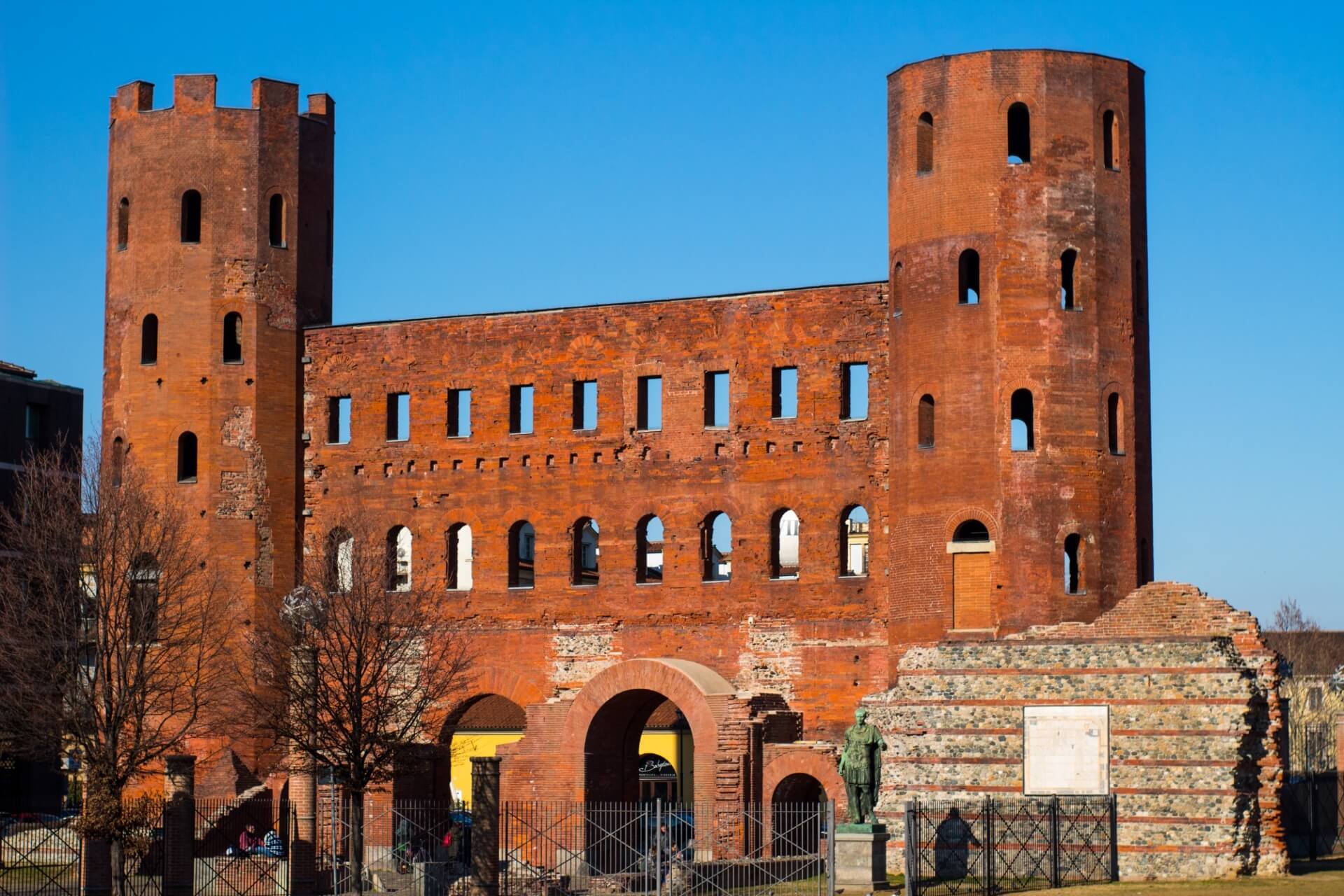
These arches were built in the 1st century BC. Their original purpose was to serve as entrance and exit gates in the fortress wall. They provided access to the settlement located on the site of the modern city. The gates are called the Palatine Towers because they are located next to the Palazzo Reale.
The history of the monument dates back centuries:
- The arches and towers were built in the 1st century BC.
- In the Middle Ages, the structure was supplemented with two sixteen-sided towers over 30 meters high.
- Reconstruction continued: in the 15th century, battlements were added to the towers.
- In the 18th century, Antonio Bernola proved that the Porta Palatina required the authorities’ attention because it was an architectural monument (restoration began).
- In the 19th century, the structure was reconstructed (additions from the Middle Ages were removed).
- In the 20th century, city authorities added bronze statues to the Porta Palatina, making the gates more picturesque.
Next to the Palatine Towers, the foundation of a guardhouse and a fragment of the fortress wall built during the Roman era have been preserved.
Sabauda Gallery
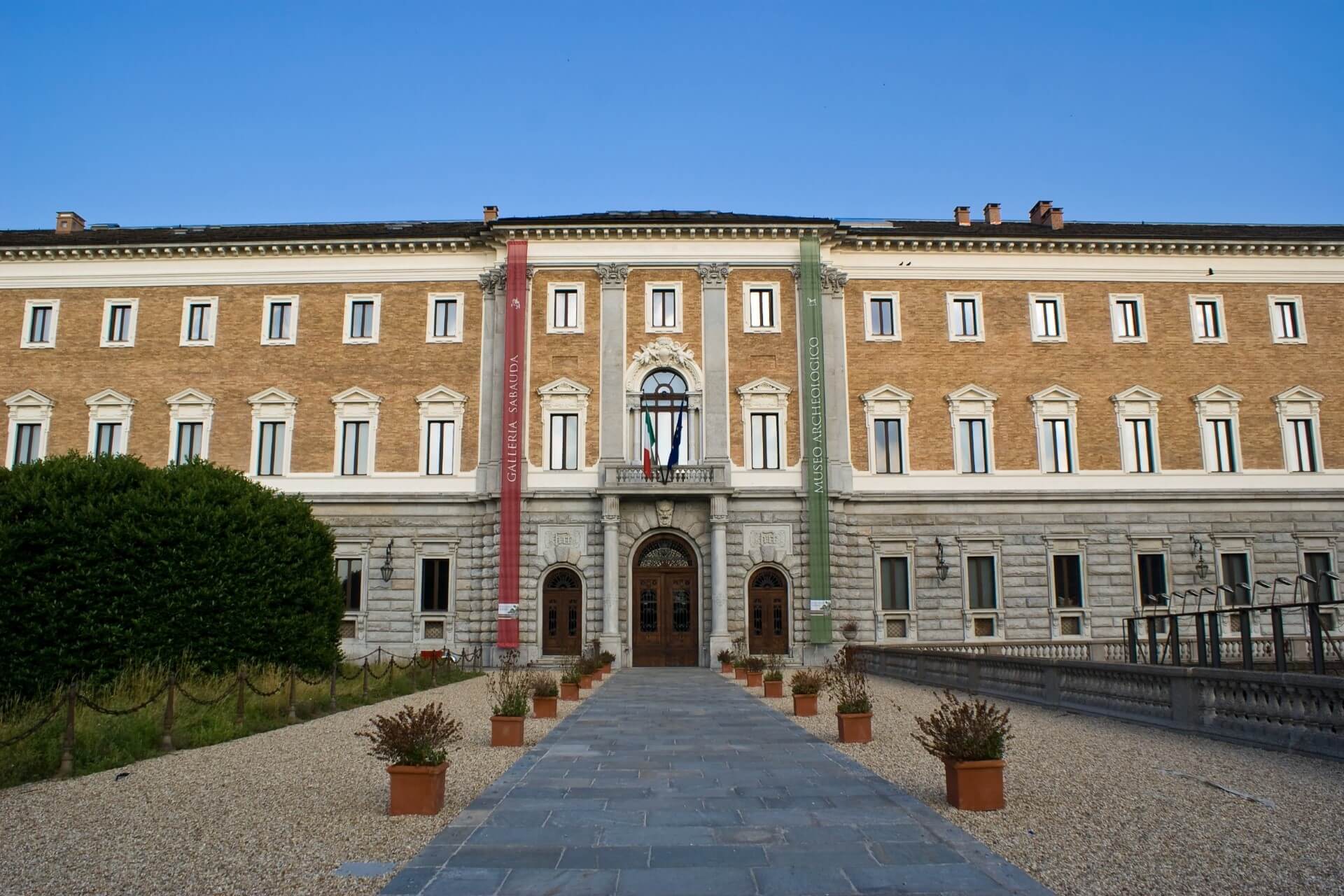
The modern collection began with a donation from the monks of the House of Savoy to the Kingdom of Sardinia. Today, you can see paintings created by European artists from the Renaissance to the 18th century. The halls feature paintings by Italian, Spanish, and Northern school painters. The corridors display posters depicting artists and art historians’ quotations about their works.
Sometimes the subjects of paintings by different authors are repeated:
- Saint Francis receiving the stigmata of Jesus Christ. This theme was depicted by Van Eyck and Pedro Fernandez.
- The Nativity of the Virgin Mary was portrayed by Apollonio di Giovanni.
- Bellini is the author of a traditional gift to a woman who has given birth to a girl: a round table with paintings. It is displayed next to the painting.
- Antonio Pollaiolo and Filippo Lippi depicted stories from the life of Archangel Raphael. This was a popular subject among medieval painters.
- Many artists depicted the Adoration of the Magi to the newborn Jesus in the Sabauda Gallery.
- Painters also focused on the story of Saint Anne, the mother of the Virgin Mary. She is considered a healer of the plague and leprosy, so a sick person seeking healing is often depicted next to her.
- Many artists were fascinated by the myths of Ancient Greece. Some authors depicted scenes from the lives of commoners. Bassano accurately described the city market.
The Sabauda Gallery is small but the most significant exhibition in Turin.
Cathedral of Saint John the Baptist
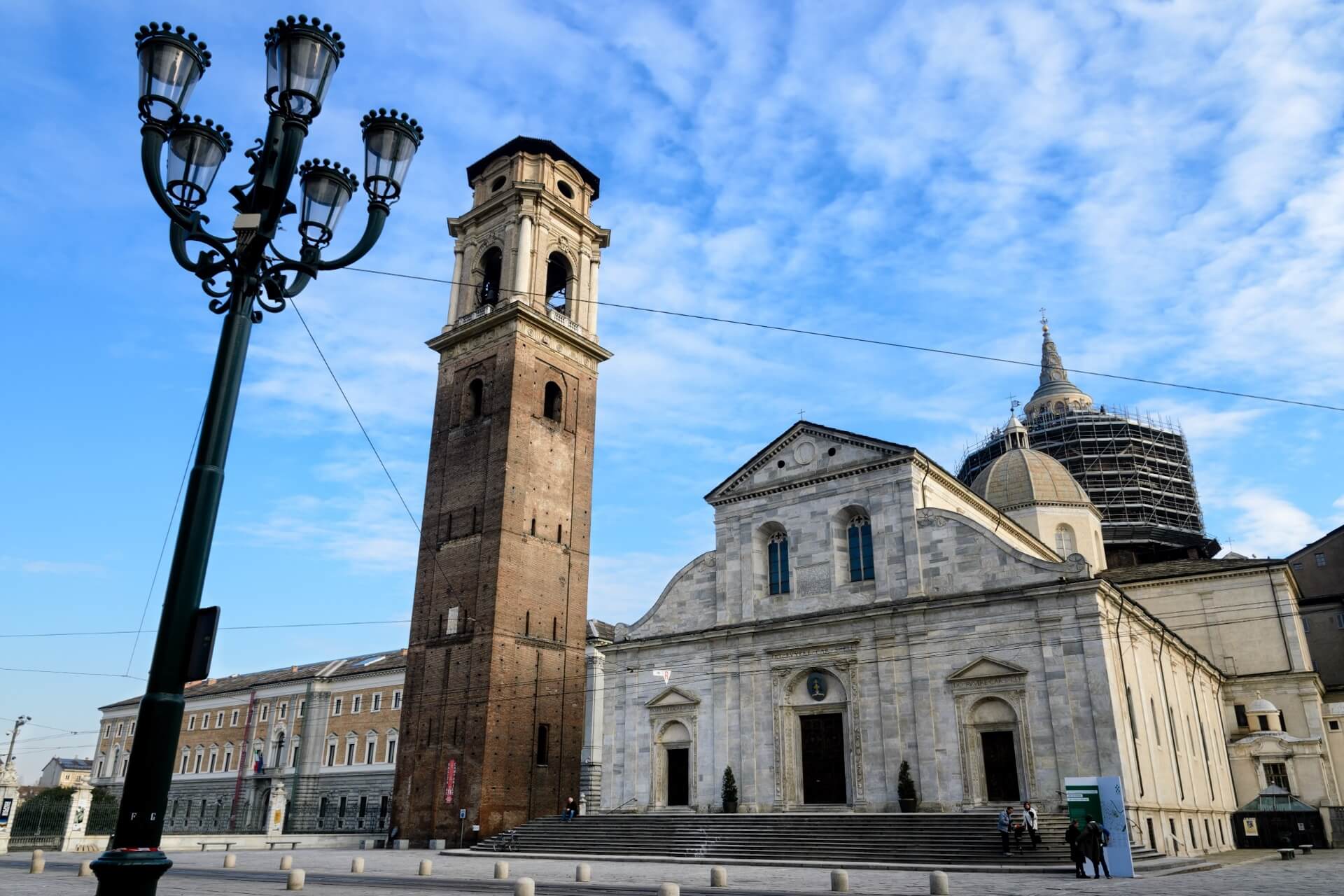
On the site where the Cathedral of Saint John the Baptist stands today, the first Christian churches were built: Giovanni Battista, the Holy Savior, and Saint Mary. By order of Cardinal Rovere, architect Caprina demolished the existing buildings and built the Cathedral of Saint John the Baptist. The sacrilege was justified by the need to build the main church of the city on a site sanctified by years of worship.
Construction was carried out at an accelerated pace: it took only seven years from laying the foundation to consecration. The first service was held in 1498. White stone was used for the cathedral, making it stand out in the cityscape, as all other buildings in the city are much darker. The forms of the structure are extremely strict. A festive staircase leads inside.
Two centuries later, a special room was needed to store the Shroud of Jesus Christ. Architect Guarini brilliantly handled this task. The chapel is elevated; to reach it, one must climb steps carved from dark marble. The lighting increases as you ascend, symbolizing the soul’s journey from darkness to light.
But for pilgrims and tourists, only a copy of the shroud is displayed in the chapel; the original is kept in the cathedral’s treasury and is shown once every 25 years.
Royal Palace
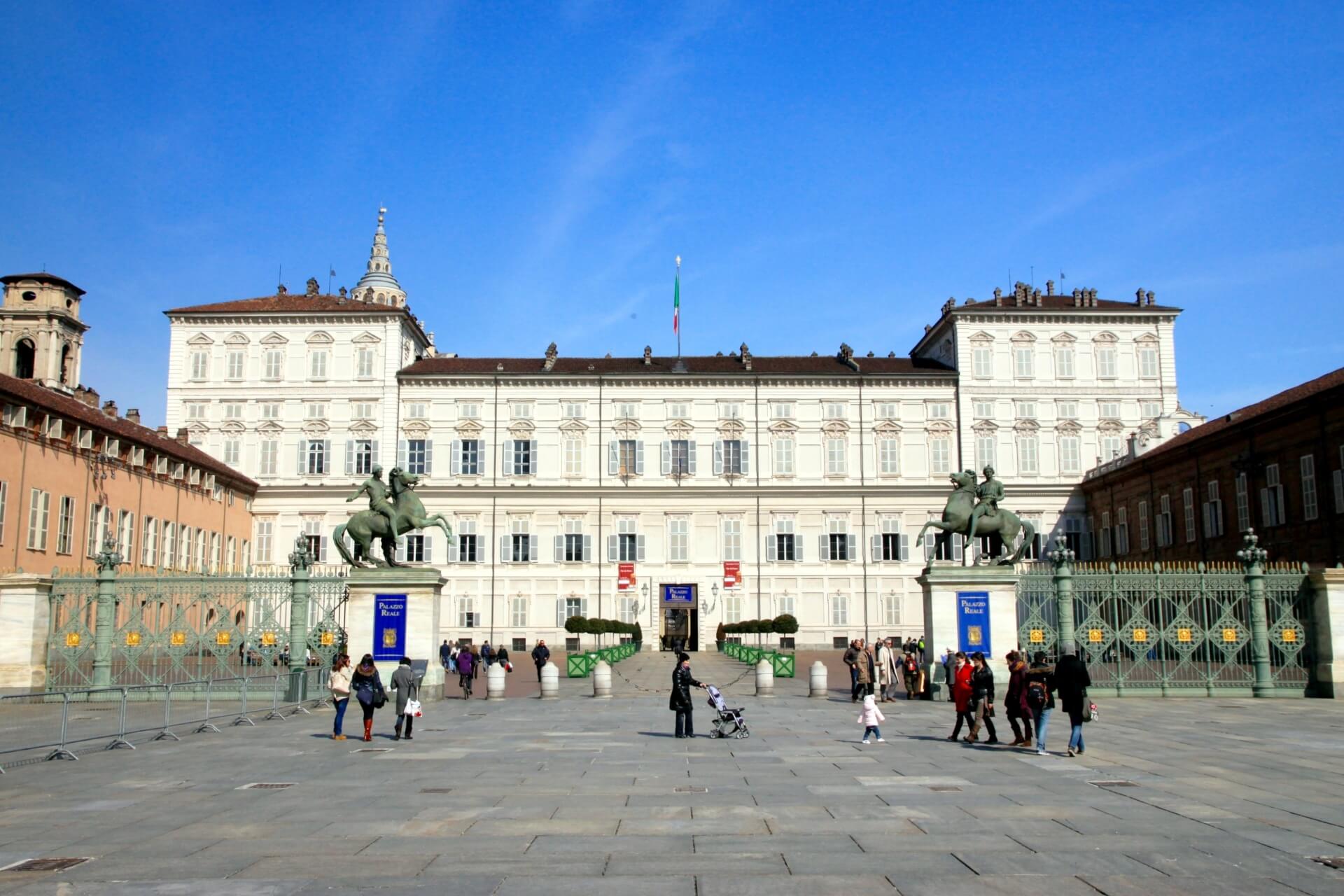
In 1997, the Palazzo Reale was included in the UNESCO World Heritage List. This site is eagerly visited by tourists arriving in Turin.
The history of the complex is quite long:
- Construction began in 1646. The Savoy royal dynasty needed a building that met contemporary luxury standards for permanent residence. The chosen site was significant: the Bishop of Turin’s palace previously stood here (it had to be demolished).
- The work continued without interruption for 16 years. Court architects built the palace, giving it Baroque architectural features.
- The building housed members of the royal family until 1865.
- After the capital was moved to Florence, the residence became secondary.
- Subsequently, the palace was expanded, with architects adding Rococo and Neoclassicism features. Today, the complex’s style is difficult to define. It resembles both the Palace of Versailles and the Palace in Peterhof.
- In 1946, the Palazzo Reale became state property. After minor restoration, it was turned into a museum of the Savoy dynasty.
For a long time, the unique relic, the Shroud of Turin, was kept in the Palazzo Reale. But after the construction of the Cathedral of Saint John the Baptist, it was moved to the chapel. The Palazzo Reale is connected to the cathedral complex by an underground passage.
Royal Armory
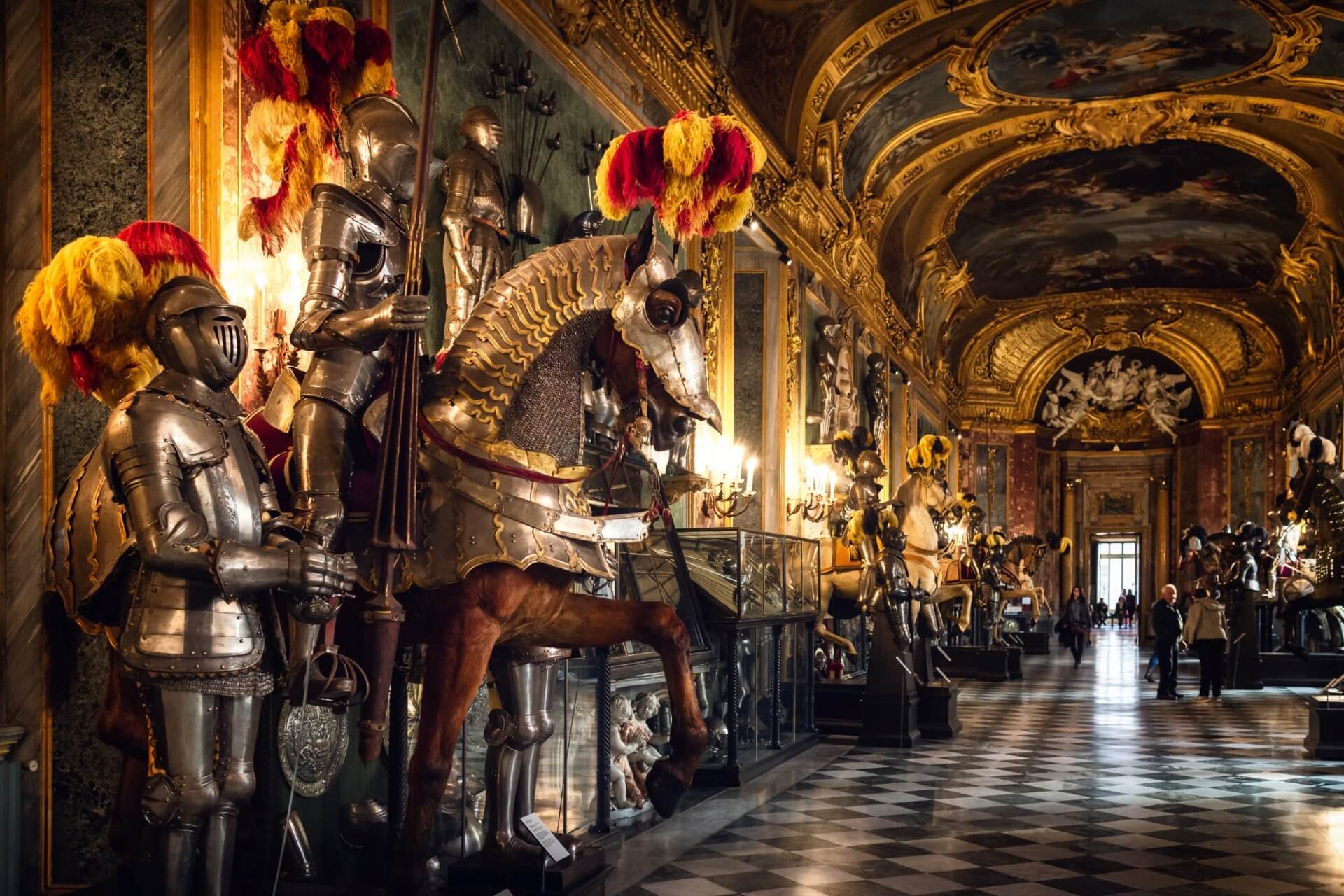
The founder of the modern exhibition was Carlo Alberto: in 1832, he began collecting weapons. The perfect location was chosen: part of the Palazzo Reale complex, practically next to the official residence. The sources of the collection were:
- The arsenals of Turin and Genoa
- The Fabbrica family’s collection
- Sanquico’s personal collection
The museum work was conducted quite competently. By 1840, the items were systematized, and a catalog was compiled. The exhibition received its first visitors in 1837. Guests noted the excellent collection and well-arranged items. Carlo Alberto was pleased. In 1554, the exhibition was supplemented with lithographs and books useful for studying weapons from different times.
The library became a popular place: researchers and ordinary citizens interested in this topic visited it. In 1946, the gallery’s status changed: it became state-owned. Restoration was completed in 2005. Today, tourists can view 5,000 items: daggers, halberds, arquebuses, knight’s armor. The collection is constantly growing. The complex administration organizes thematic exhibitions, ensuring no one will be bored.
Palazzo Madama
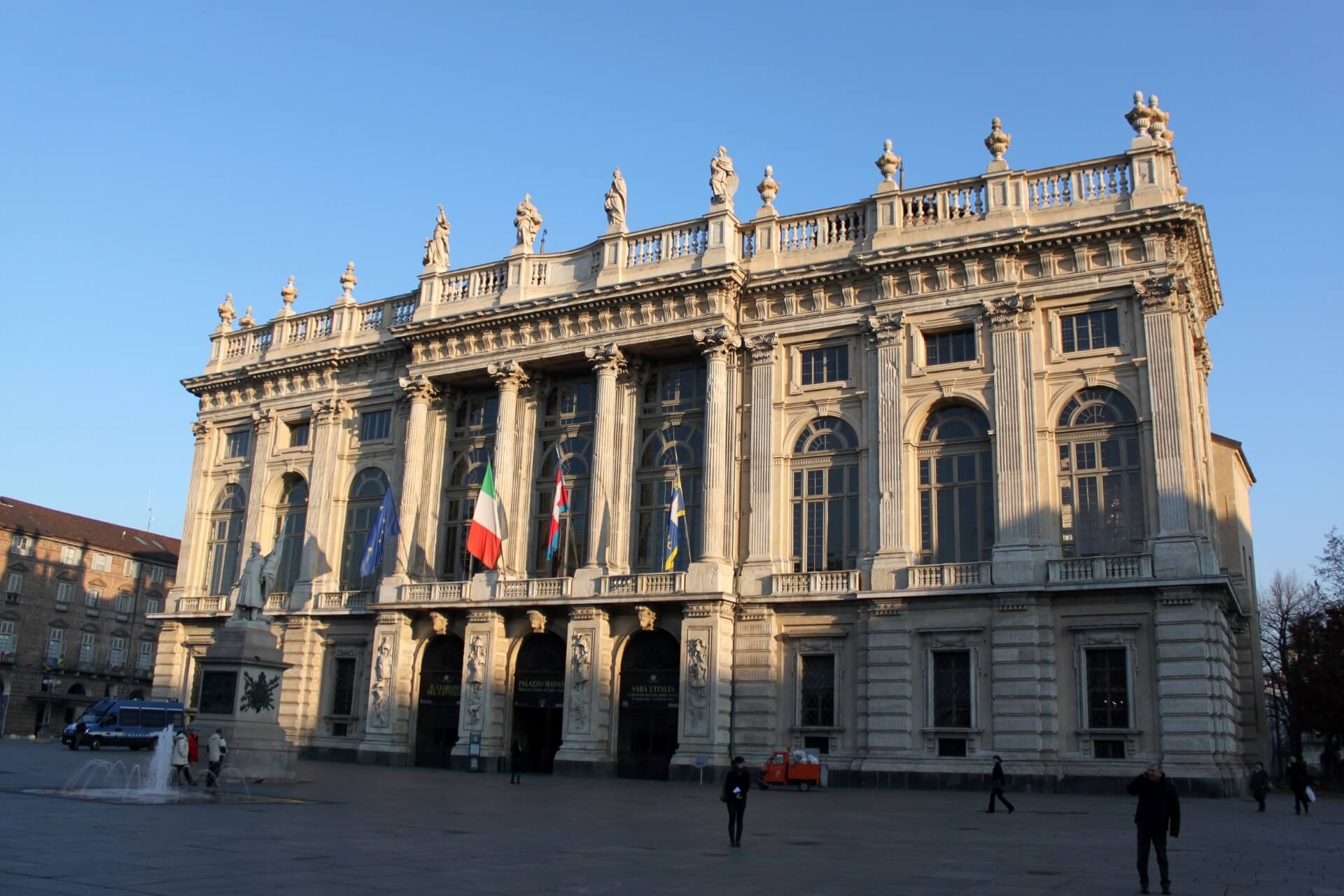
Palazzo Madama was built on the line of fortifications constructed by the ancient Romans to protect the city. The colony was founded in the 1st century, initially a small fortress. In the Middle Ages, the status of the building changed: it was expanded, and several towers were added. The building acquired a rectangular profile.
After the Savoy dynasty came to power, it became possible to use the Palazzo as a royal residence. This continued until the construction of the Palazzo Reale. Even after the royal family’s relocation, the significance of the palace did not diminish: widowed queens preferred to spend their final years here. Marie Christine of France resided in Palazzo Madama until her death.
The building got its current name due to this fact. Later, Palazzo Madama was used for court sessions, and famous artists exhibited their works here. Since 1934, the building has housed an exhibition of antique art. Some researchers claim that the Shroud of Turin was briefly stored here.
Palazzo Madama’s modern appearance is unusual: it has a richly decorated facade and a modest overall look. This may be because the building was initially used for city defense. The exhibition at Palazzo Madama will delight visitors not only with ancient artifacts but also with a rich collection of medieval items.
Teatro Regio
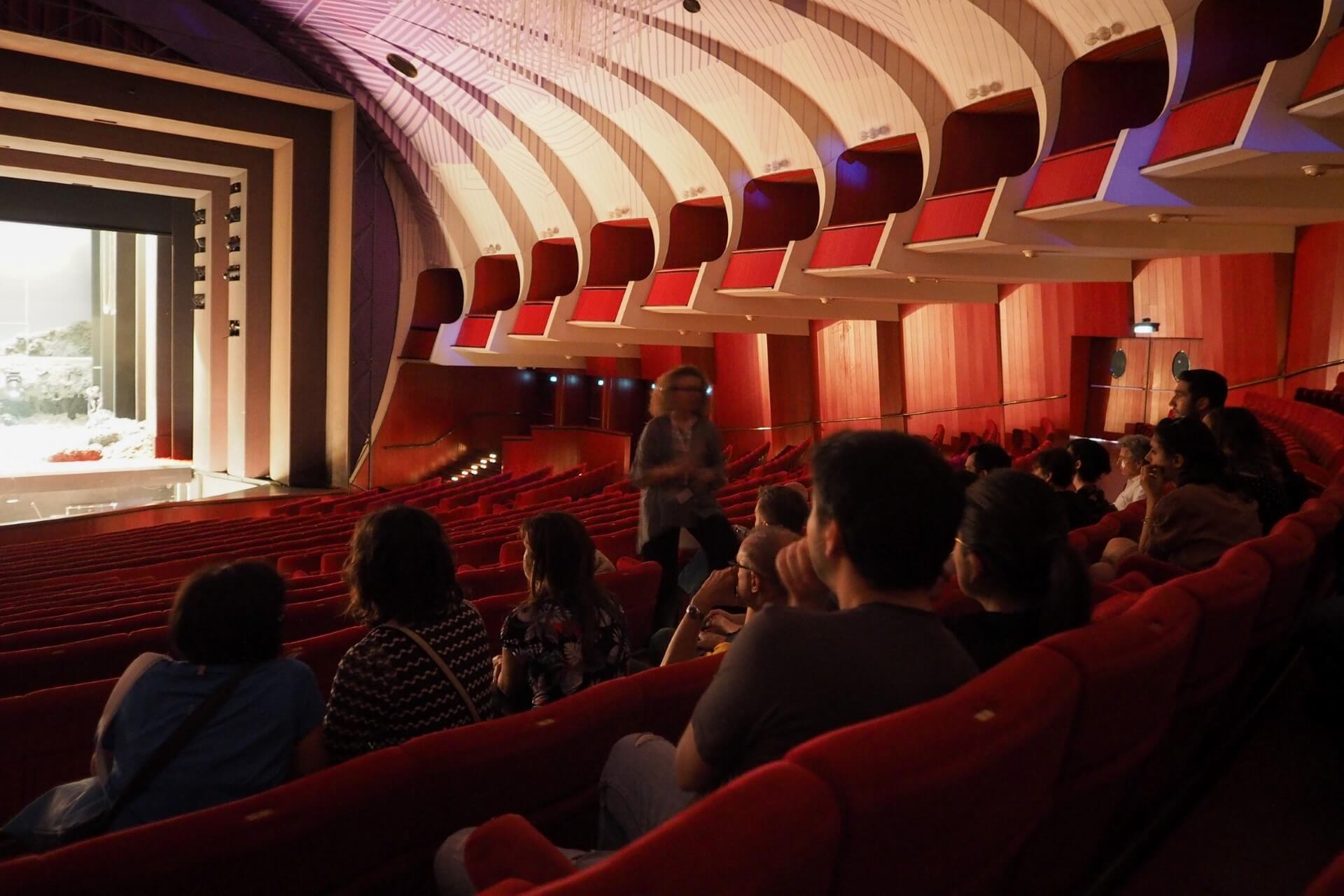
Despite being the capital of the duchy, Turin did not have an opera house. Performances were either held outdoors or on the stages of drama theaters. Only in 1713, at the behest of Vittorio Amedeo of Savoy, did architect Juvarra begin working on a theater building project. However, construction only began after the architect’s death.
In 1738, Alfieri improved the project at the request of Duke Emmanuel III of Savoy. The monarch’s task was to build a luxurious royal theater. The task was successfully accomplished: within two years, a building with a 2,500-seat auditorium and excellent acoustics was erected. The audience was seated on five tiers.
This marked the end of the first prosperous period in the history of the Teatro Regio:
- For six years (1792-1798), the theater did not operate.
- After reopening, a series of name changes followed (National, Grand Theater of Arts, Imperial). The repertoire also changed to cater to French tastes.
- In 1914, the building was returned to the Savoy dukes, and its name was restored: Royal Theater.
- The Teatro Regio was then transferred to the municipality.
- World War I impacted the theater: it was closed until 1919.
- In February 1936, the theater’s interior burned, leaving only part of the facade intact. After reconstruction, the Teatro Regio reopened in April 1973.
Despite difficult periods, the theater’s stage hosted world-famous artists. Toscanini, Puccini, Wagner, and Strauss performed here. Today, the Teatro Regio is the center of Turin’s musical and cultural life.
Mole Antonelliana

The height of the Mole Antonelliana is over 160 meters, with about 50 meters accounted for by the spire. The tower is the tallest brick building in Europe. Later structures were built using modern technologies and materials (glass, steel, concrete, plastic), but the Mole Antonelliana was constructed from good old brick. The tower has an unusual history. The Jewish community of the city hired architect Antonelli to design a synagogue. Funds were raised by the entire community.
Antonelli announced a small sum and set a short deadline. But after 13 years, it was clear that the work was far from complete, and the budget had been exceeded multiple times. The community stopped funding and renounced its rights to the building. In 1889, the tower was completed with municipal funds. It was named after the architect: Mole Antonelliana, and the Risorgimento Museum was housed in it. In 1938, the exhibition was moved to another location.
The tower is popular with tourists: it has an observation deck offering stunning views of the old city. You can reach it by a high-speed elevator. Then, visit the National Museum of Cinema located in the tower and hear amusing stories from Italian film shoots.
Risorgimento Museum
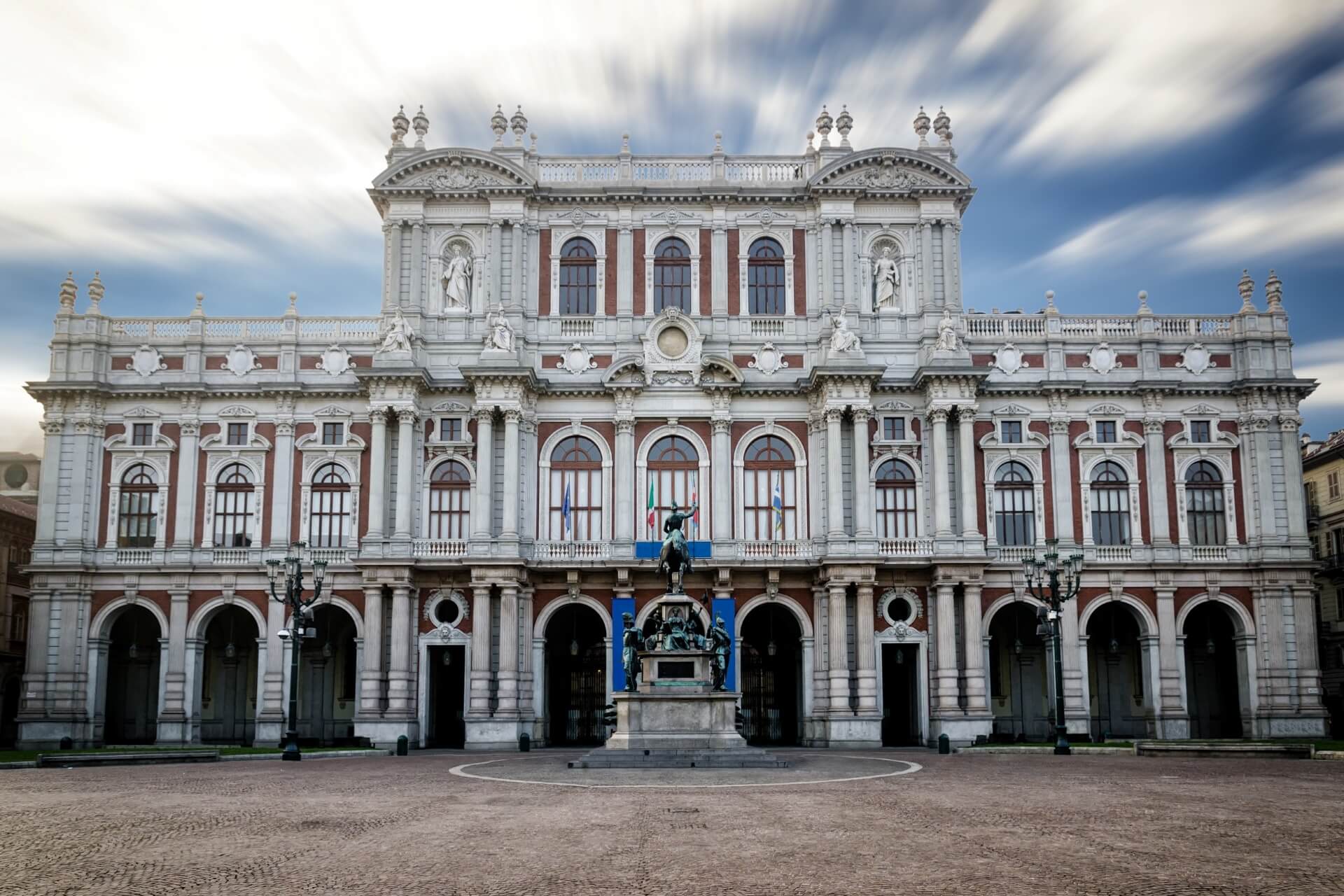
The exhibition describes an important period in Turin and Italy’s history: the struggle against occupation and the unification of the country. As the capital of the Duchy of Savoy, the city played a leading role in the national liberation movement. Initially, the exhibition was housed in the Mole Antonelliana immediately after the tower’s opening.
In 1938, the Risorgimento Museum was moved to the Palazzo Giornale (Valentino Park). It stayed there briefly before moving to the Palazzo Carignano, where it remains today. In 2006, the museum closed for restoration and expansion. The goal was to show the influence of events during the Risorgimento period on the political situation in European countries.
The updated exhibition opened to celebrate the 150th anniversary of Italy’s unification. The modern exhibition occupies 30 halls of the Palazzo Carignano. You can see weapons, books, paintings, documents, flags, and uniforms from the Risorgimento era.
The centerpiece of the exhibition is the subalpine parliament’s chamber of deputies. It is the only reconstructed parliamentary chamber in the world. The complex is equipped with modern technology: visitors can use interactive screens and audio and video guides. Ramps and lifts are available for the disabled. Guided tours can be arranged.
Palazzo Carignano
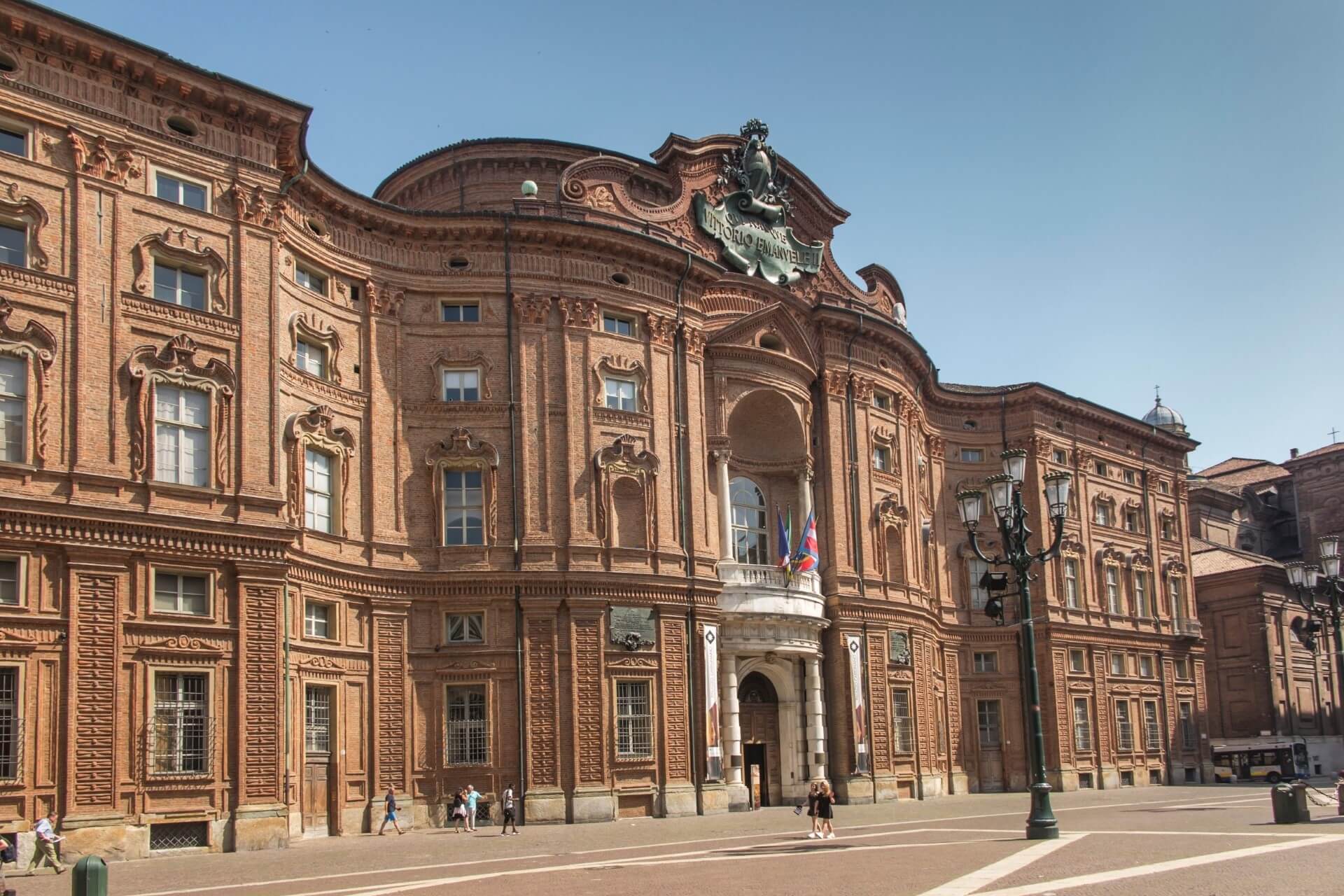
In beauty and luxury, the palace rivals the Royal Palace, although it was intended for the Savoy dukes’ side line. The unique architecture and interiors attract Turin’s guests. The Palazzo Carignano is a UNESCO World Heritage Site. Construction began in 1684. The project was designed by Guarino Guarini, and Pietro Somazzi and Stefano Legnani worked on the interiors.
Guarini skillfully altered the traditional facade style: the red-brick Baroque took on a wave-like contour. The interior staircases fully replicate the external contours. The first-floor window openings are unusually decorated: they are framed by Native American headdresses, commemorating the Carignan regiment’s merits in the French conquest of North America.
The back of the Palazzo Carignano is also stunningly beautiful: the facade is in pseudo-Renaissance style, adorned with porticos, columns, and bas-reliefs. A statue of Duke Charles Albert of Sardinia stands at the entrance. In the early 19th century, Carignano became state property, and the first government met there until the capital moved to Rome. In the 1990s, the palace underwent extensive renovation, and it now houses the fascinating Risorgimento exhibition.
Egyptian Museum
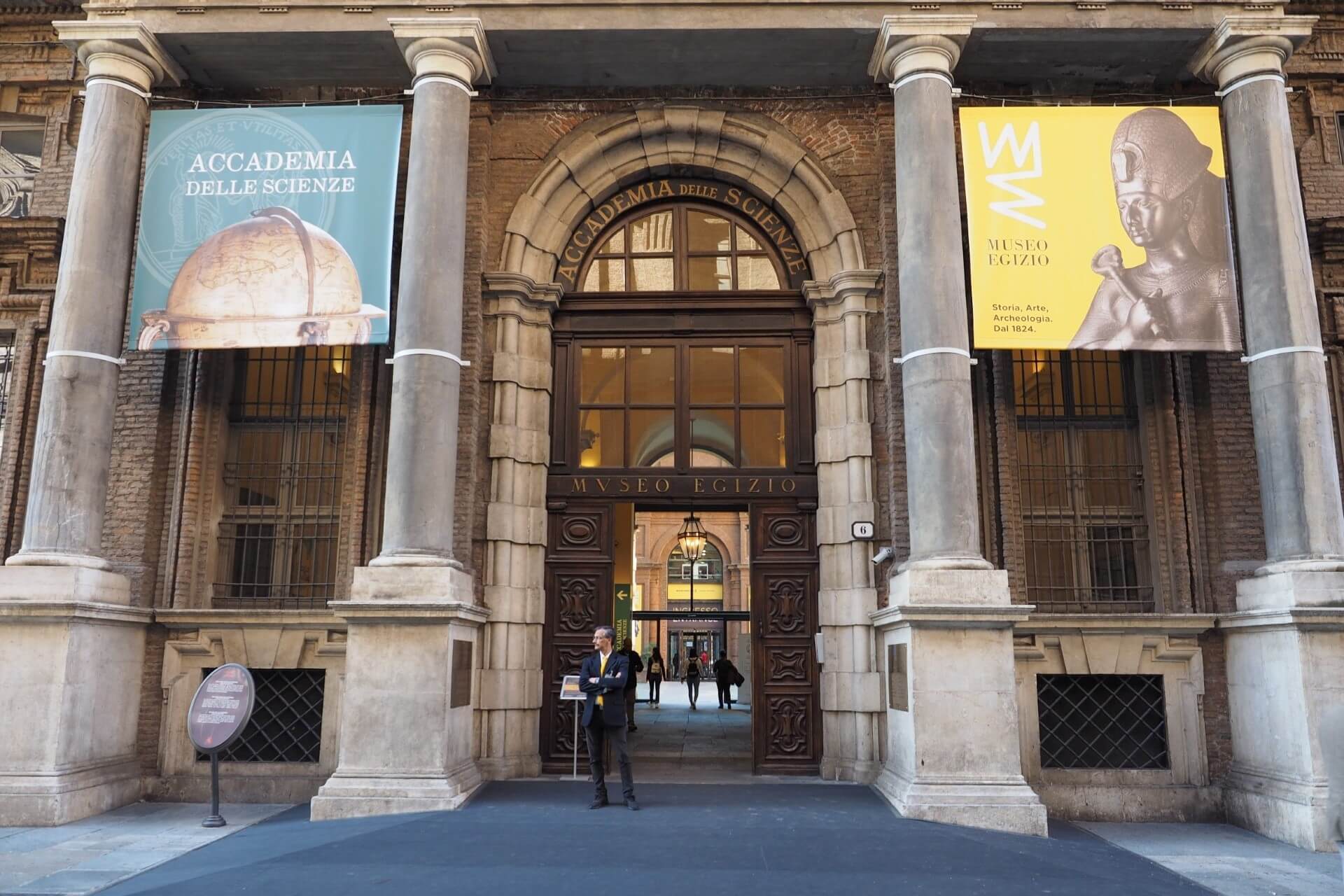
The creation of the exhibition was initiated by Duke Charles Felix of Savoy. He purchased Drovetti’s personal collection, consisting of over 5,500 artifacts. This collection was combined with the Savoy dukes’ personal collection, gathered by Vitaliano Donati. Thus, the Egyptian Museum in Turin was established. The exhibition was continually supplemented with finds from excavations in Egypt.
The laws of the time allowed 50% of the finds to be exported to another country. Italy actively participated in archaeological work, making the museum’s collection the second most valuable and extensive after Cairo’s. The permanent exhibition is housed in the Academy of Sciences palace. The building itself is worth seeing. Initially designed by the talented Guarino Guarini, it was completed by Michelangelo Garove.
Notable artifacts include:
- The oldest mummy
- The Gebelein canvas (the oldest linen canvas painting)
- The statue of Princess Redit (made of hard stone — granodiorite)
- The tomb of the unknowns
- The statue of Wahki (a well-preserved limestone sculpture)
- The erotic papyrus (an ancient satire on a love theme)
- The gallery of sarcophagi
- The gallery of kings
All artifacts are labeled in multiple languages. Audio guides are available for rent at the ticket office.
Piazza Solferino
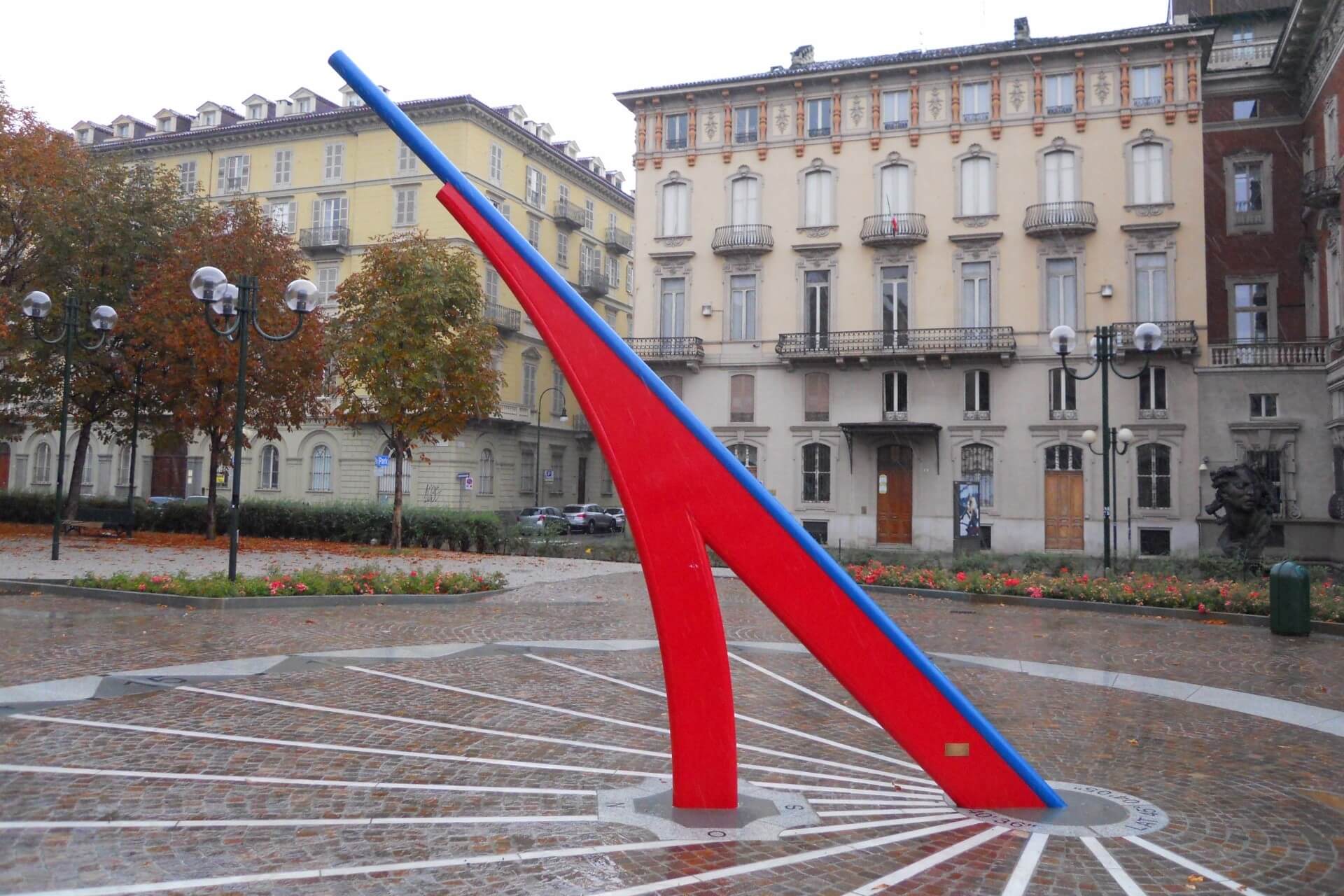
In the 18th century, Piazza del Bosco was an unremarkable place on the city’s outskirts. The surrounding buildings were diverse, and the square’s shape was irregular. Gardens added some variety. But in the 19th century, the city authorities decided to reconstruct it: the city was growing and developing rapidly. Piazza del Bosco was almost in the center. Carlo Promis’s project made the square square-shaped, and the surrounding buildings acquired a unified style.
Unfortunately, most gardens had to be demolished, leaving only one section (now a boulevard). By the late 19th century, the area took its final form: it became oval. The name also changed to Piazza Solferino, commemorating the final battle for independence at Solferino. The last reconstruction occurred in the early 21st century.
For the 2006 Winter Olympics, the Atrium Gallery was erected in the center but later demolished. However, the center was enhanced with solar designer clocks by Lucio Morra. Today, you can relax on one of the grassy lawns, stroll along the boulevard, or view popular monuments:
- The Angelica fountain
- The sculpture of Ferdinand of Savoy
- The Alfieri theater
- The Palazzo Fiorino
Tourists enjoy taking photos near the blue-red clocks in the center of Piazza Solferino.
Church of the Great Mother of God
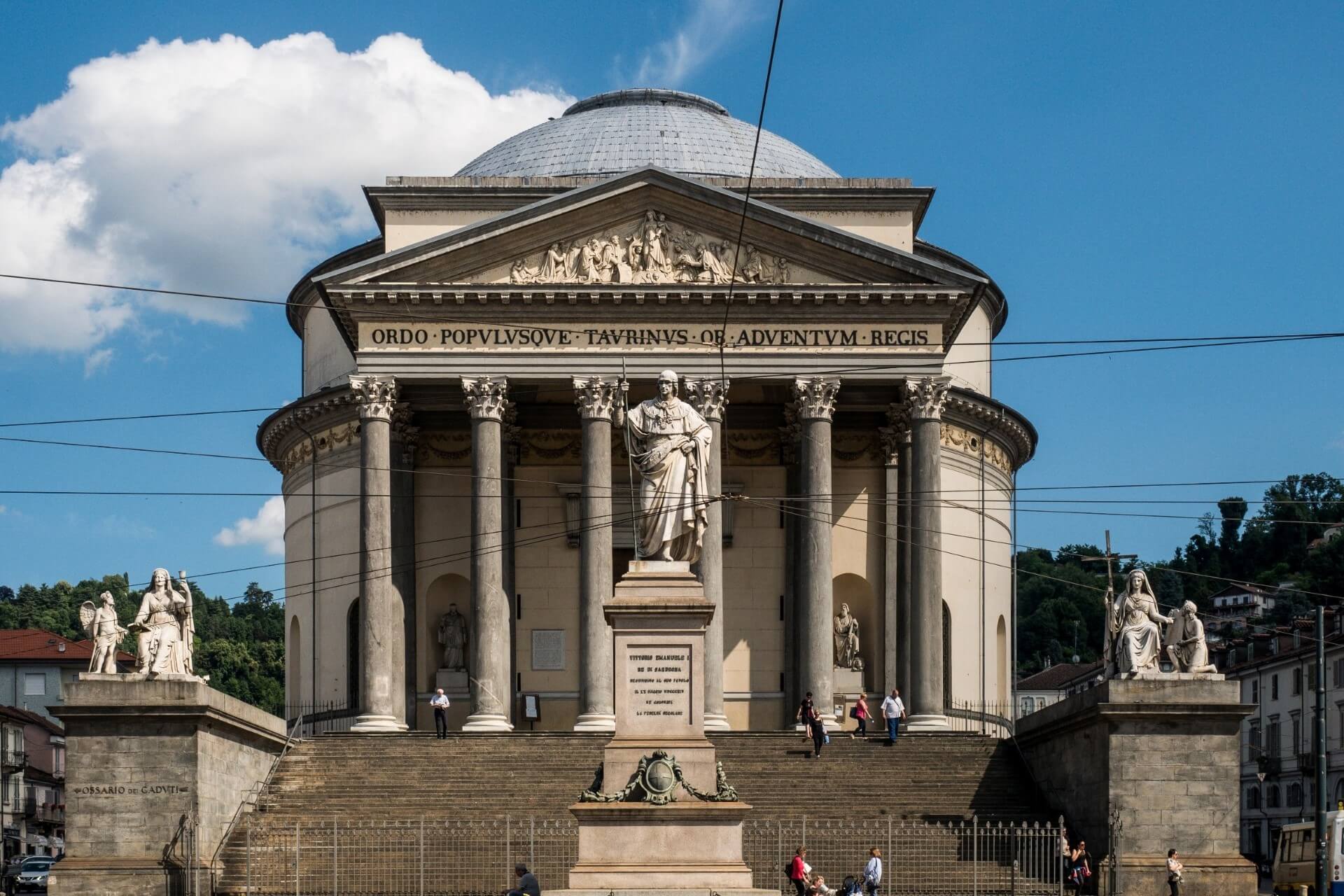
The Gran Madre church was built by grateful citizens to celebrate the restoration of the Savoy dukes’ power in the country. The decision to construct the building was made immediately after Napoleon Bonaparte’s defeat in 1814, and the first service in the Gran Madre was held in 1831.
The Church of the Great Mother of God is strikingly different from Christian churches:
- It has almost no crosses.
- Its architecture does not follow the known rules used in church construction.
- The building is unusually located: the facade faces the Po River, and the rear is surrounded by hills.
However, tourists are also attracted to the Gran Madre by the legends told by Turin residents:
- The Gran Madre is the apex of a triangle controlling dark forces (the base is the London-San Francisco line).
- The Gran Madre is part of a triangle controlling light forces (the other elements are Lyon and Prague).
- The statue of Faith has a severed finger: if it were present, it would point to the place where the Holy Grail is hidden.
- The statue of Religion protects the location of the Holy Grail with its cross (therefore, the relic cannot be found).
- The proximity to the Po River enhances the natural energy of the church.
The numerous symbols unrelated to Christianity give the church a special charm. Interestingly, the Gran Madre is owned by the municipality, not the Roman Catholic Church.
Villa della Regina
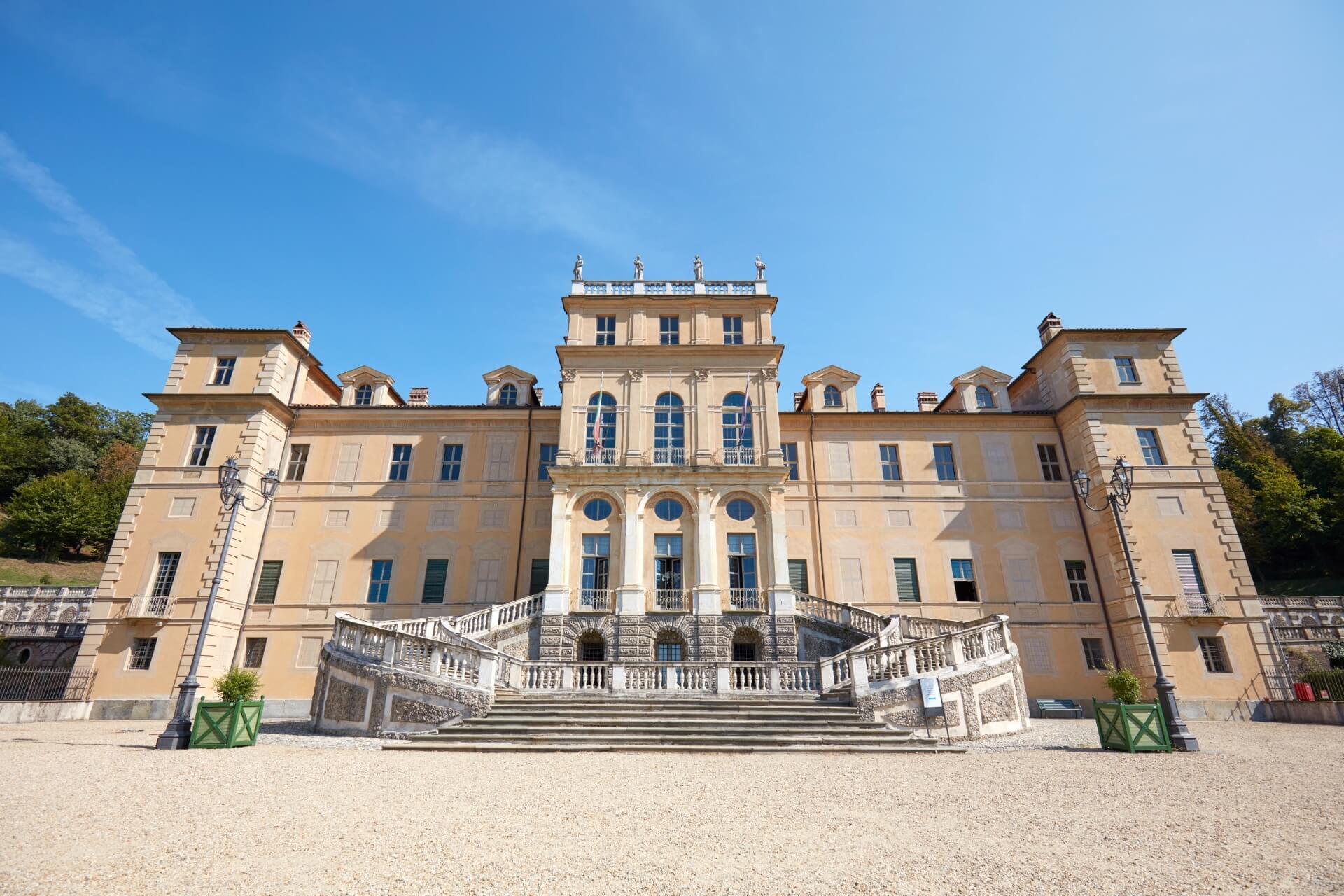
In 1562, Duke Emmanuel of Savoy made Turin the state capital. To glorify the ruling dynasty and add pomp to the city, the king decided to build palaces and mansions, attracting the most fashionable architects for the designs. Villa della Regina was created as a country residence for Cardinal Maurizio of Savoy in the early 17th century.
Later, Victor Amadeus Savoy’s wife, Anne of Orléans, owned it, and it acquired its current name: Villa della Regina. When Rome became the capital of unified Italy, the garden complex was abandoned and neglected. It gradually deteriorated and was severely damaged by bombings during World War II.
Villa della Regina remained in ruins until 1997 when the government decided to undertake extensive restoration of the garden complex. The work continued until 2006. The complex was restored to its historical appearance, but its former grandeur could not be fully regained: some interior details were lost forever. Even an untrained tourist can notice this while inspecting the premises.
The halls decorated in Japanese and Chinese styles are the most successfully restored. The garden complex was accurately restored: paths were cleared, sculptures were installed, and gazebos were repaired. However, missing elements were not added: some pedestals lack statues.
Monte dei Cappuccini
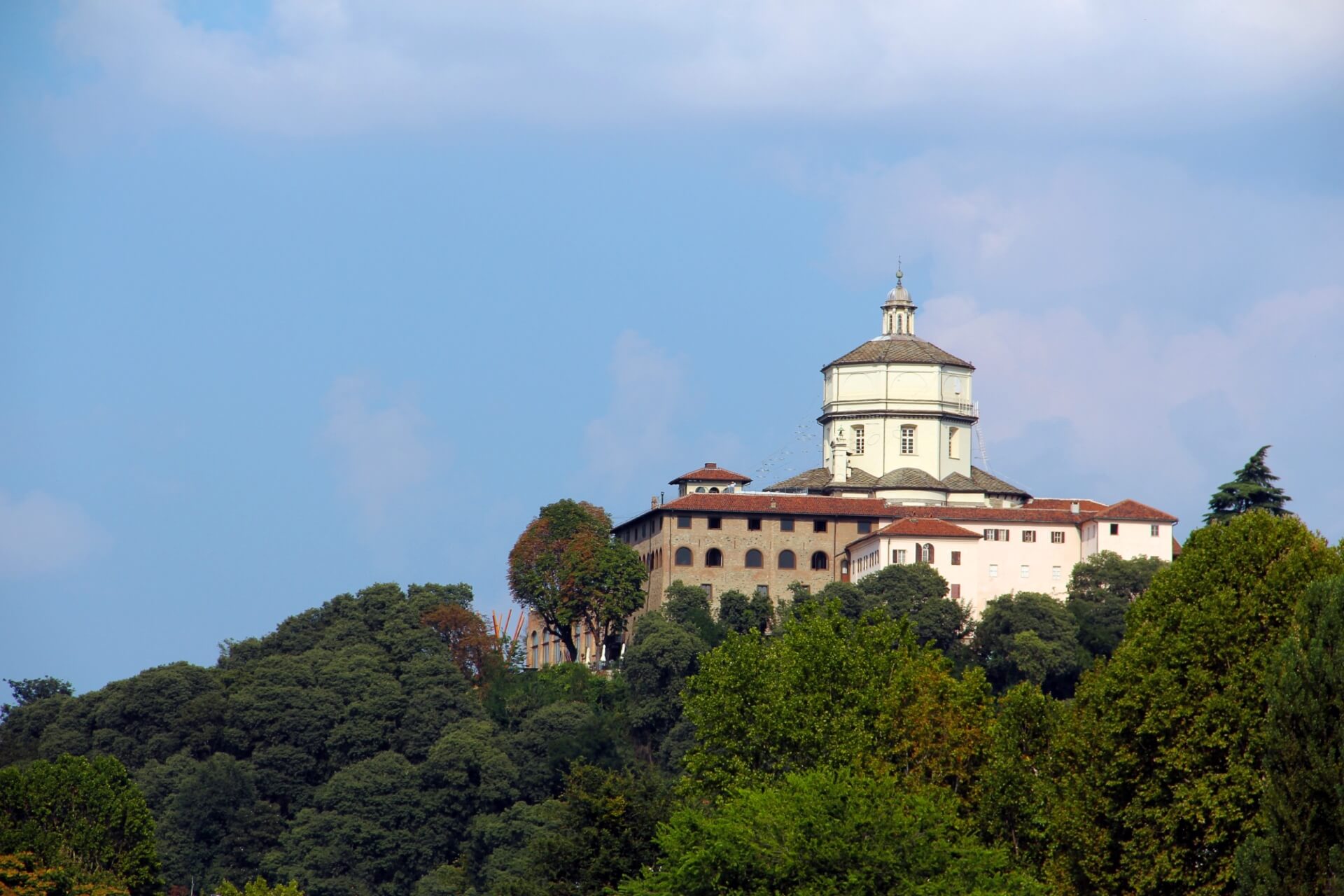
During the city’s founding and until the end of the 11th century, a fortress stood on this elevation: it was convenient to monitor the Po River crossing from the height. All arrivals in Turin had to pass through the fortress gates for control. Later, Franciscans built a monastery on the summit. It remains active: all those seeking peace and solitude find refuge here. Any tourist can come to Monte dei Cappuccini and stay for contemplation and reflection.
However, most visitors come to Monte dei Cappuccini to enjoy stunning views of the city: the hilltop is a natural observation deck providing a panoramic view of Turin. Additionally, fossilized shells and remains of marine organisms are found on the slopes of Monte dei Cappuccini. Scientists have concluded that the hill was once an elevation on the seabed.
Valentino Castle
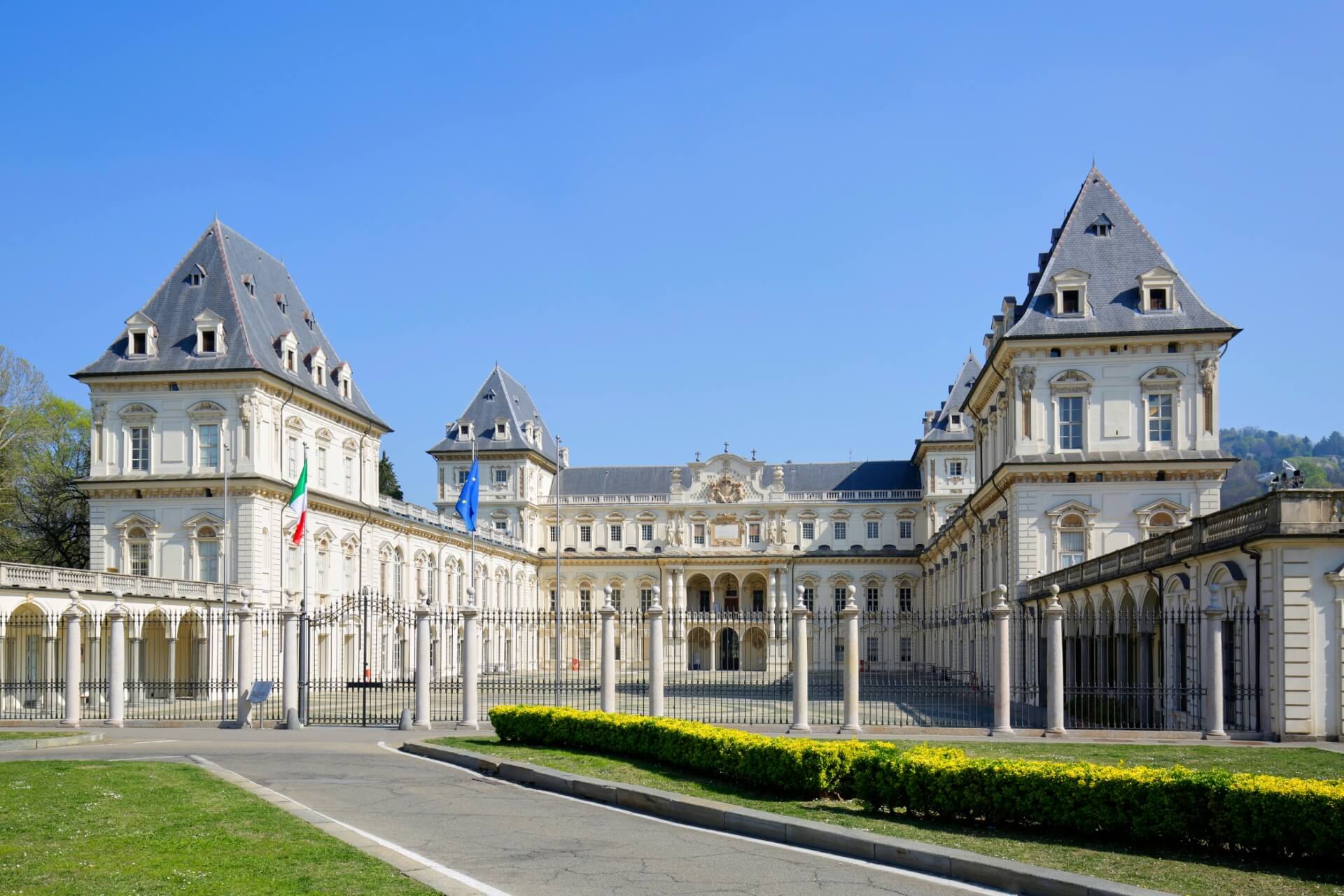
The castle is located near the Church of Saint Valentine, which is why it is named after the revered saint. It was built in the 13th century by the Savoy dukes as a fortification. However, in the 17th century, the new owner of the castle, Marie Christine of France, remodeled it. The residence acquired its current appearance, characterized by a curved facade with two distinctly different sides: one grand and festive, the other modest and austere.
In the early 19th century, the Valentino Castle was abandoned and fell into disrepair. However, by the end of the century, it was transferred to the Polytechnic University. After reconstruction in 1900, the castle’s halls hosted the first art exhibition, which became a regular event. The unique appearance and original interiors of Valentino Castle led to its inclusion in the UNESCO World Heritage List.
Medieval Village
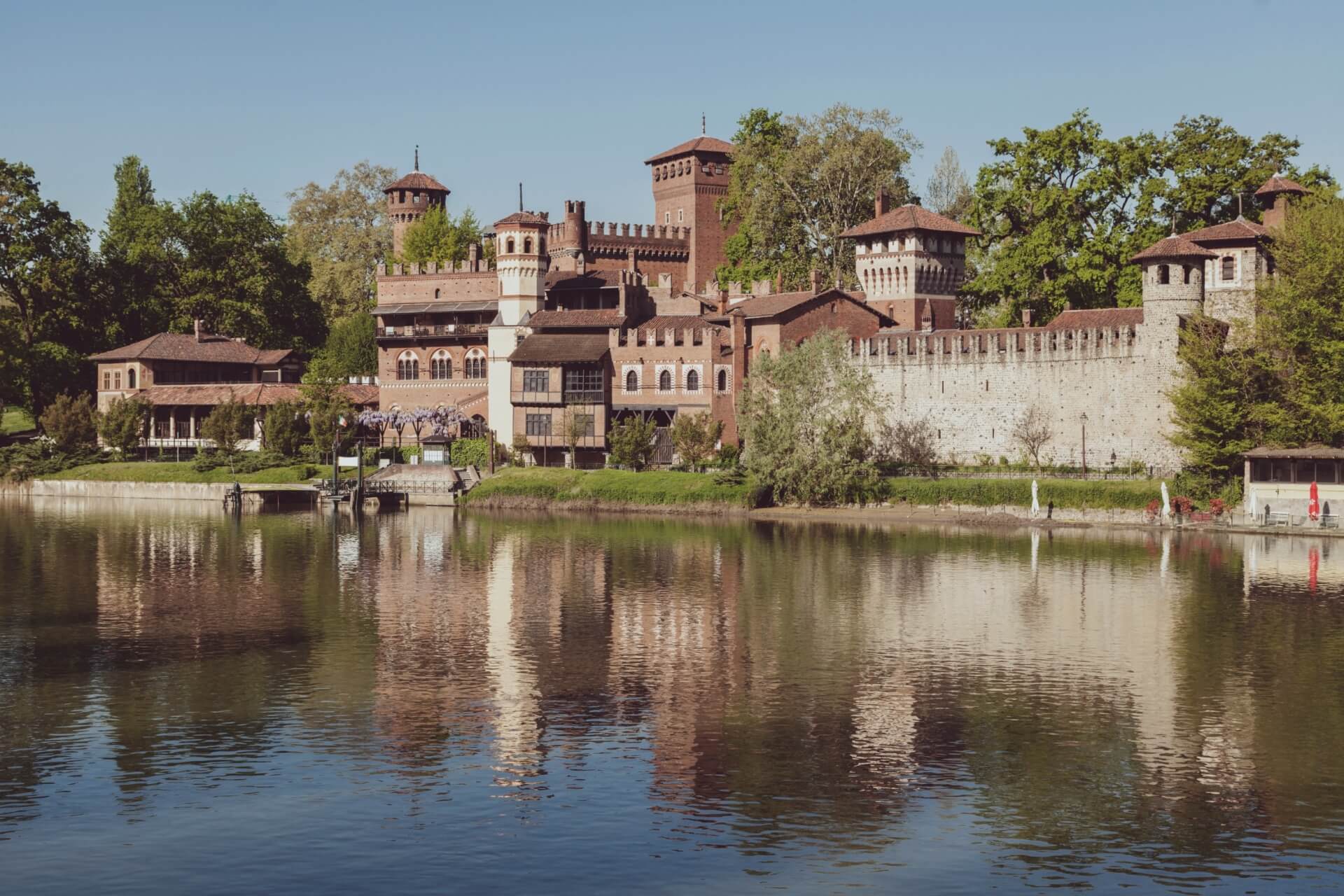
This unique complex depicts the life of 15th-century duchy inhabitants. However, it was built in the 19th century for the Industrial Exhibition. The project was developed by a team of artist-historians. The village consists of houses where peasants and modest townspeople lived, workshops (pottery, carpentry, weaving, blacksmith), and a small fortress for the settlement’s defense.
The complex was initially intended to be dismantled after the exhibition, but the locals grew fond of the installation. Today, the village welcomes visitors from Italy and abroad. During holidays, wine, cheese, and fruits grown in Piedmont are sold here.
Fountain “Twelve Months”
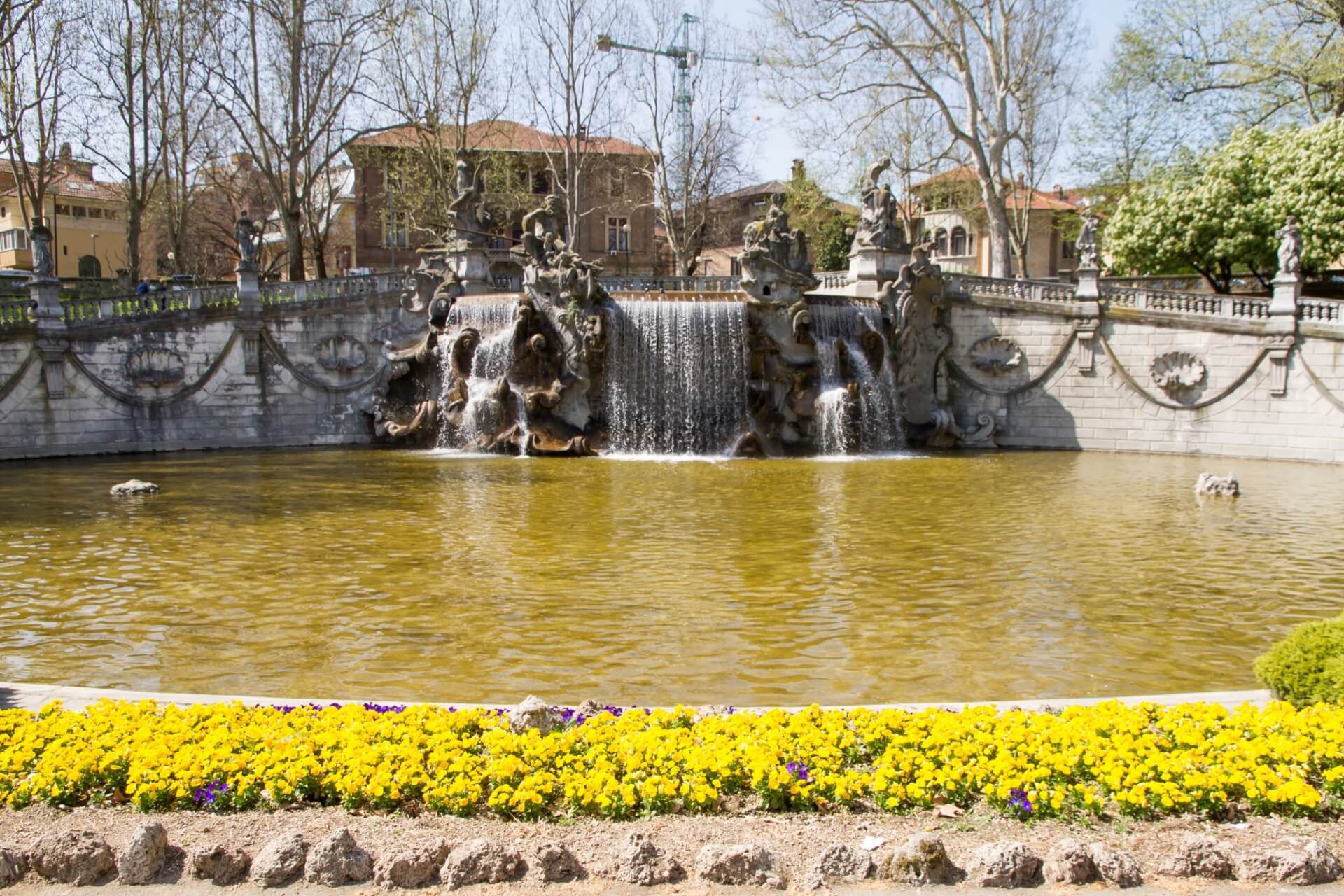
An excellent place for romantic meetings, the fountain was built as part of a grand project to celebrate the 50th anniversary of the Piedmont Constitution. Other elements of the exhibition were dismantled after the festivities, but the “Twelve Months” continues to delight tourists. The basin is slightly inclined.
Water flows into it from the central fountain, and statues of the 12 calendar months are installed on pedestals along the gently sloping terrace edges. Four compositions near the waterfall symbolize the four rivers flowing through Turin: Po, Dora, Stura, and Sangone. The fountain is surrounded by greenery, and lanterns light up in the evening. It’s a popular spot for tourists from various countries.

